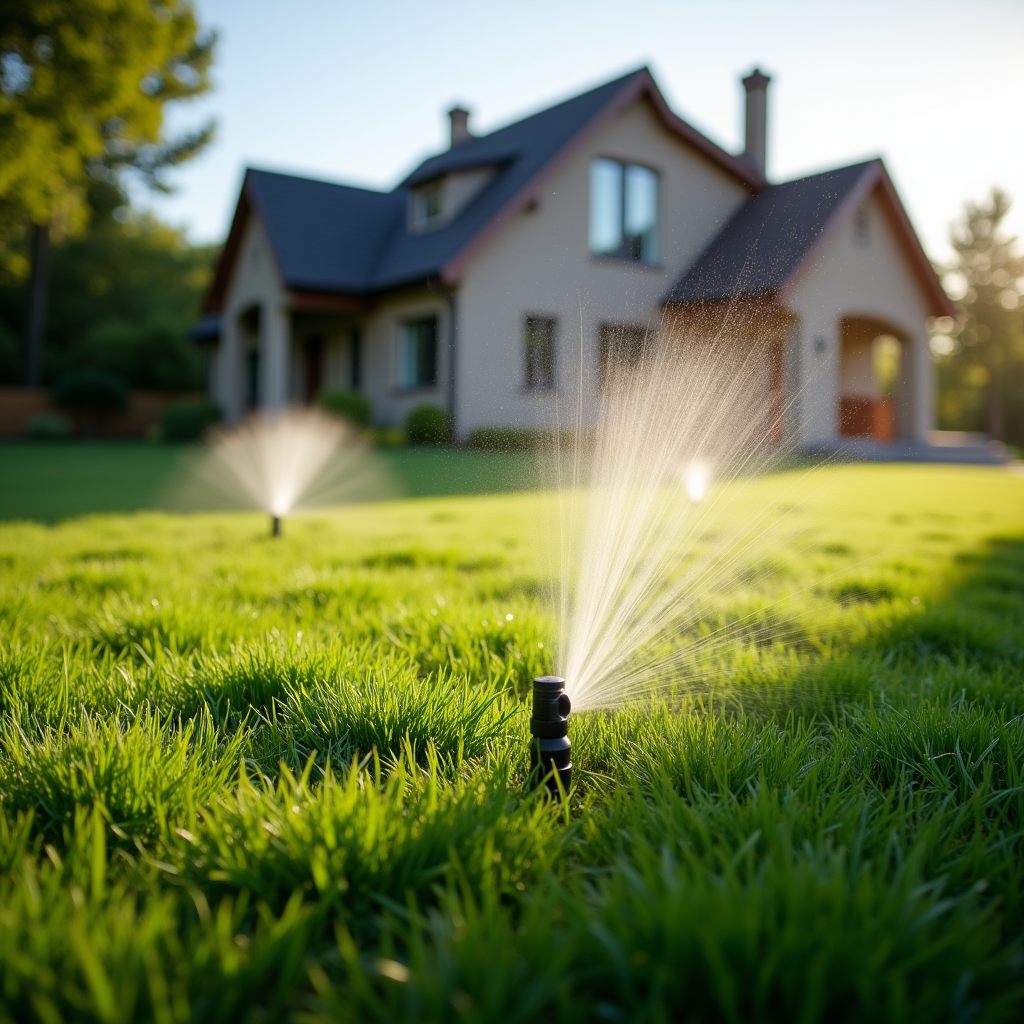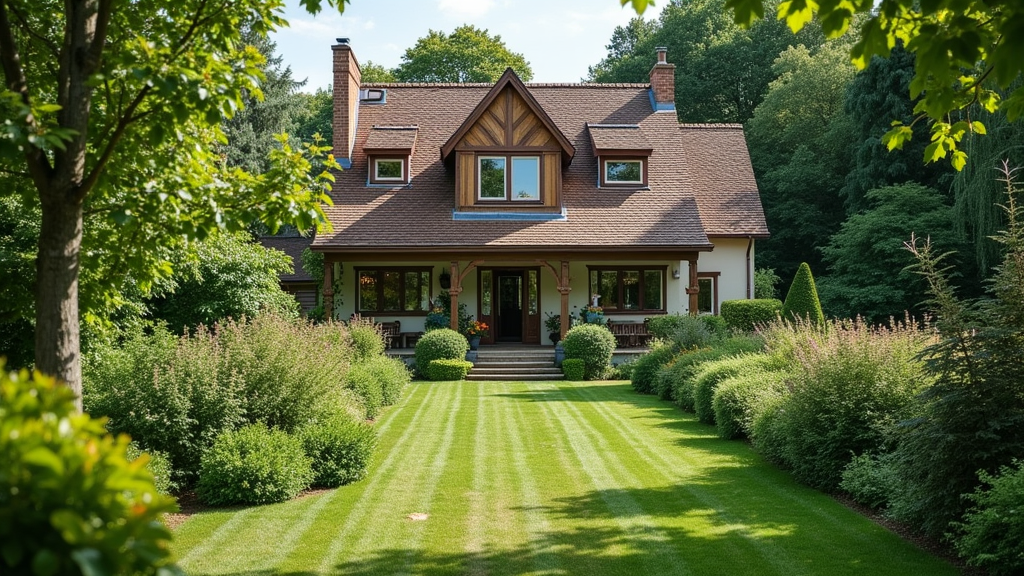Introduction
In today's fast-paced world, many homeowners dream of having a lush green lawn without the endless hours of care. Imagine a beautiful outdoor space that requires minimal effort! That's where the concept of a low-maintenance lawn comes into play. This article will guide you through practical tips and tricks to create a stunning lawn that won't take over your weekends.
What is Lawn Care?
Lawn care encompasses all activities involved in maintaining the health and appearance of your grass. It includes mowing, watering, fertilizing, aerating, and pest control. A low-maintenance approach simplifies these tasks without compromising beauty. So, how do you achieve that?
Understanding Your Lawn's Needs
1. Know Your Grass Type
Different grass types have varying needs for water, sunlight, and nutrients. Understanding what type you have is crucial in optimizing your lawn care practices.
Cool-Season vs. Warm-Season Grasses
- Cool-season grasses like Kentucky Bluegrass thrive in northern climates. Warm-season grasses such as Bermuda are best suited for southern areas.
2. Soil Testing: The Foundation of Healthy Grass
Have you ever thought about how healthy your soil really is? Conducting a soil test can reveal pH levels and nutrient content. Knowing this information helps tailor your lawn care strategy effectively.
Creating a Low-Maintenance Lawn: Tips and Tricks
3. Choose the Right Grass Seed
When selecting grass seed for a low-maintenance lawn, opt for drought-resistant varieties or native grasses that require less water and fertilization.
Top Grass Seed Choices
| Grass Type | Sunlight Requirement | Water Needs | |--------------------|---------------------|----------------| | Fine Fescue | Partial to Full | Low | | Zoysia | Full Sun | Moderate | | Buffalo Grass | Full Sun | Very Low |
4. Use Mulch Wisely
Applying mulch not only enhances aesthetics but also retains moisture in the soil while suppressing weeds—another handy way to ease your maintenance schedule!
5. Efficient Irrigation Systems
Investing in an irrigation system can save time while ensuring your lawn gets just the right amount of water. Consider installing drip irrigation or soaker hoses for efficiency.
Watering Strategies
6. Water Deeply but Infrequently
A common mistake is frequent shallow watering; it encourages shallow root growth! Instead, water deeply once or twice a week to promote deep roots.
7. Choose Early Morning for Watering
Why early morning? Temperatures are cooler then, reducing evaporation losses and allowing plants to absorb more water effectively.
Mowing Techniques
8. Mow High
Setting your mower blade higher can help retain moisture and shade the soil—great tips toward developing a thriving low-maintenance lawn!

Ideal Mowing Heights by Grass Type
- Kentucky Bluegrass: 2.5-3 inches Bermuda Grass: 1-2 inches
9. Keep Your Mower Sharp
A sharp blade makes clean cuts that promote better healing of grass blades—a small tweak that yields significant results!
Fertilization
10. Slow-Release Fertilizers Are Your Friend
Instead of quick-release fertilizers that require frequent applications, choose slow-release options to keep nutrients coming over time with less work on your part.
11. Fertilize Less Often with Organic Options
Using organic fertilizers not only feeds your lawn but enhances soil health over the long term—an investment worth making!

Weed Control
12. Pre-Emergent Herbicides
Using pre-emergent herbicides can prevent weeds from germinating in the first place—saving you time on weeding later!
13. Hand Weeding as Needed
While it’s not entirely avoidable, keeping an eye out for rogue weeds can minimize their impact on your garden's appearance without extensive effort.
Aeration Techniques
14. Aerate Once a Year for Optimal Health
https://www.ramirezlandl.com/aboutAeration improves air circulation and nutrient absorption within the soil—a key step towards creating that low-maintenance paradise!
Best Times to Aerate Your Lawn
- Cool-season grasses: Early spring or fall Warm-season grasses: Late spring or early summer
Pest Management
15. Encourage Beneficial Insects
Instead of relying solely on chemical pesticides, attract beneficial insects like ladybugs which feed on harmful pests—nature has its ways!
16. Natural Pest Control Methods
Explore options like neem oil or insecticidal soap as eco-friendly alternatives when needed—they're often just as effective without harsh chemicals.
Seasonal Maintenance Tips
17. Fall Preparation: The Key to Success in Spring
Preparing your lawn during autumn by raking leaves and applying fertilizer sets it up for success come springtime—don’t skip it!

Autumn Checklist:
- Rake leaves Aerate if necessary Apply winter fertilizer
Creating Beauty Without Overdoing It
18: Embrace Hardscaping
Incorporating hardscaping elements like pathways or patios reduces grassy areas needing constant upkeep while adding aesthetic appeal to your yard.
Benefits of Hardscaping:
- Reduces mowing area Lowers water usage Enhances visual interest
FAQ Section
1. What’s the best grass type for low-maintenance lawns?
Fine fescue or zoysia are excellent choices due to their drought resistance.
2. How often should I mow my low-maintenance lawn?
Mow every 1–2 weeks depending on growth rate; aim for high cuts.
3. Do I need to fertilize my lawn regularly?
Using slow-release fertilizers will reduce frequency; typically every 6–8 weeks suffices.
4. Can I let my clippings stay on the lawn?
Absolutely! Leaving clippings provides nutrients back into the soil—a win-win!
5. How do I know if my soil needs aeration?
If water puddles or grass looks brown despite watering, consider aeration.
6. Are there any natural weed control methods?
Yes! Vinegar solutions or boiling water can help manage pesky weeds effectively.
Conclusion
Creating a low-maintenance lawn doesn’t have to be daunting! By understanding what works best for your environment—like choosing appropriate grass types and using efficient watering techniques—you’ll soon be enjoying a lush landscape without breaking a sweat (or bank). With just some planning and these handy tips at your disposal, you'll find yourself spending more time enjoying your yard rather than laboring over it! Happy gardening!